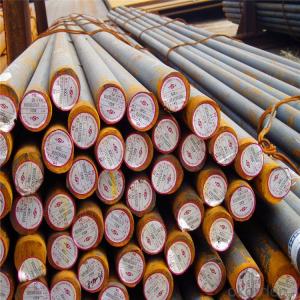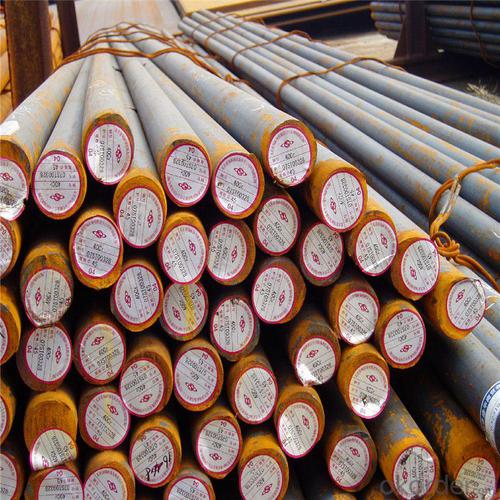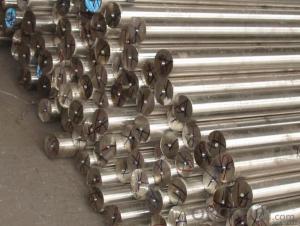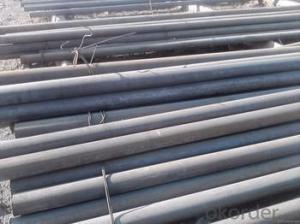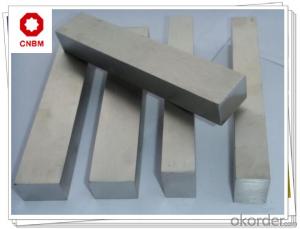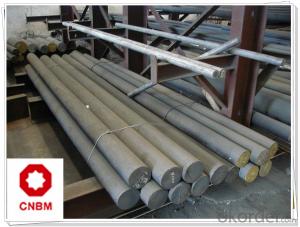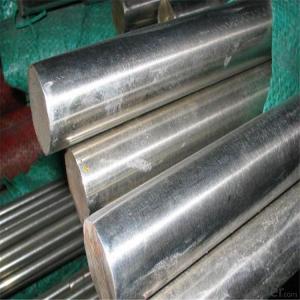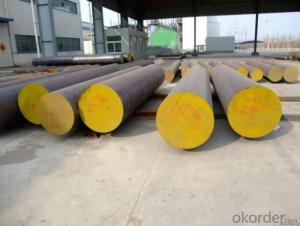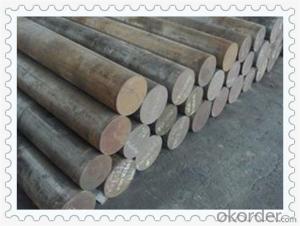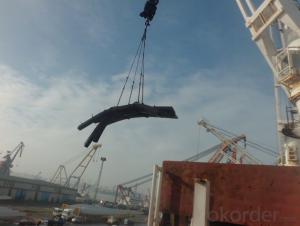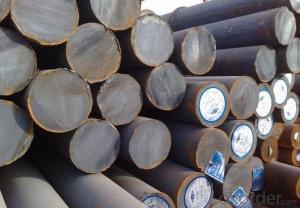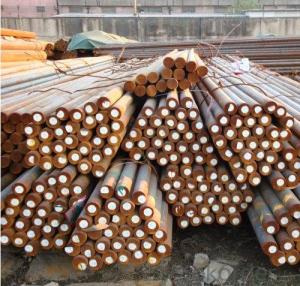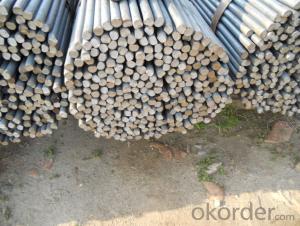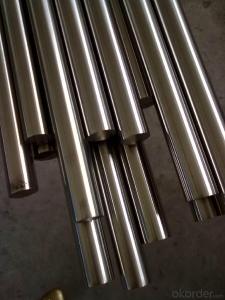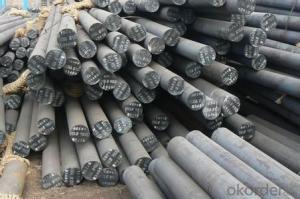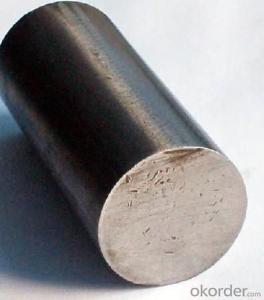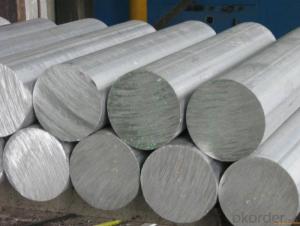1040 1045 Hot Rolled Carbon Steel Bar
- Loading Port:
- Tianjin
- Payment Terms:
- TT OR LC
- Min Order Qty:
- 100 m.t.
- Supply Capability:
- 500000 m.t./month
OKorder Service Pledge
OKorder Financial Service
You Might Also Like
Specification
1040 1045 Hot Rolled Carbon Steel Bar
Product Description of 1040 1045 Hot Rolled Carbon Steel Bar
1. Steel grade: SAE1040, 40#, C40, S40C
2. Length: 6M-12M
3. Diameter: 16mm-300mm
4. Product range: round bar, flat bar, square bar
5. Technique: Hot rolled, forged, cold drawn
Specification of 1040 1045 Hot Rolled Carbon Steel Bar
Material | 1040 | Round bar | Dia(mm) | 16-300mm |
Process | EAF + LF + VD + Forged + Heat Treatment (optional) | Length (mm) | Max 12m | |
Heat treatment | Normalized / Annealed / Quenched / tempered | Flat bar | Thickness(mm) | 8-500mm |
Delivery condition | Hot forged +Rough machined (black surface after Q/T)+ Turned (optional) | Width(mm) | 70-200mm | |
Test | Ultrasonic test according to SEP 1921-84 D/d | Length (mm) | Max 12m |
Chemical Composition of 1040 1045 Hot Rolled Carbon Steel Bar
C | Si | Mn | Cr | Ni | Cu |
0.37~0.43 | 0.17~0.37 | 0.35~0.65 | ≤0.25 | ≤0.30 | ≤0.25 |
Photo Show of 1040 1045 Hot Rolled Carbon Steel Bar
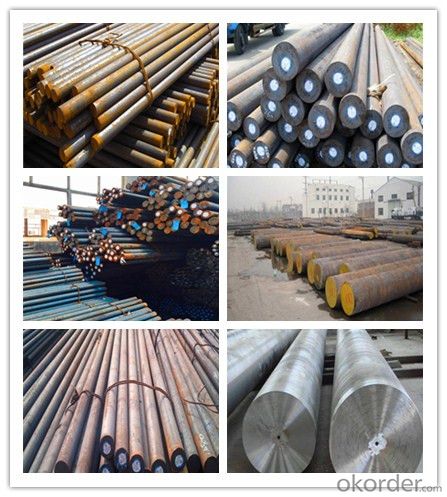
Packing and Delivery:
Packing in bundle package, or as customer's requirements.
Delivery Detail: 45 days after receiving the deposit.
Usage and Applications of 1040 1045 Hot Rolled Carbon Steel Bar
1. Steel round bar is used in a large number of architectural and engineering structures. Or it can be used in construction of plants for the production of steel house frames, high-voltage transmission towers, bridges, vehicles, boilers, containers, ships, etc.
2. And we can use this kind of product on the performance of the mechanical parts if the demand is not very high.
3. Some special material steel round bar can be used for main shaft of steamer, hummer shank, with big section and supper force.
Company Information
CNBM International Corporation is the most important trading platform of CNBM group.
Whith its advantages, CNBM International are mainly concentrate on Cement, Glass, Iron and Steel, Ceramics industries and devotes herself for supplying high qulity series of refractories as well as technical consultancies and logistics solutions.

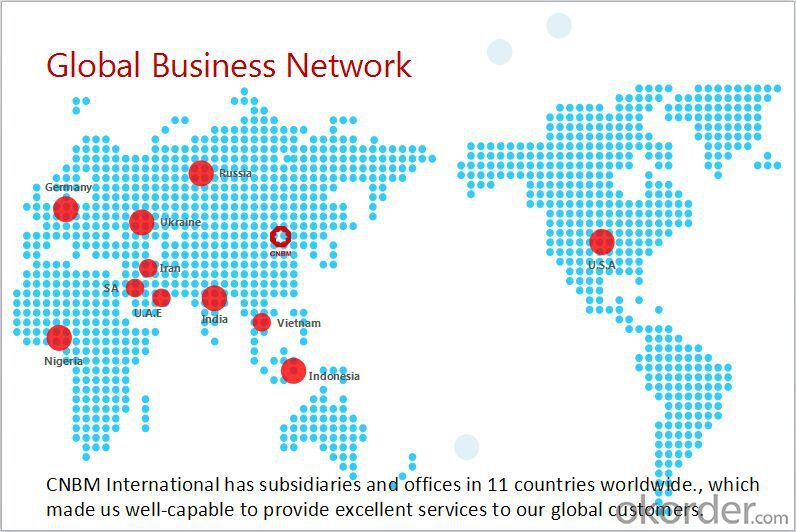
F A Q
1, Your advantages?
professional products inquiry, products knowledge train (for agents), smooth goods delivery, excellent customer solution proposale
2, Test & Certificate?
SGS test is available, customer inspection before shipping is welcome, third party inspection is no problem
3, Factory or Trading Company?
CNBM is a trading company but we have so many protocol factories and CNBM works as a trading department of these factories. Also CNBM is the holding company of many factories.
4, Payment Terms?
30% TT as deposit and 70% before delivery.
Irrevocable L/C at sight.
5, Trading Terms?
EXW, FOB, CIF, FFR, CNF
6, After-sale Service?
CNBM provides the services and support you need for every step of our cooperation. We're the business partner you can trust.
For any problem, please kindly contact us at any your convenient time.
We'll reply you in our first priority within 24 hours.
- Q: What are the different types of steel round bar surface finishes for improved aesthetics?
- Some common types of steel round bar surface finishes for improved aesthetics include polished, brushed, satin, and bead blasted finishes.
- Q: How do steel round bars compare to ceramic round bars?
- The properties and applications of steel round bars and ceramic round bars differ significantly. Steel round bars exhibit exceptional strength and durability due to their composition of iron and carbon alloys, along with additional elements like manganese, chromium, and nickel. They possess high resistance to deformation, can withstand high temperatures, and have impressive tensile strength. As a result, steel round bars find common use in construction, manufacturing, and engineering industries where strength and reliability are vital. Their versatility allows for easy machining and shaping into various forms. On the contrary, ceramic round bars consist of non-metallic materials such as clay, porcelain, or glass. Ceramics offer distinct properties, including heat resistance, corrosion resistance, and wear resistance. Additionally, they are chemically inert and exhibit excellent electrical insulation capabilities. Ceramic round bars are frequently employed in industries that demand high-temperature resistance, chemical resistance, or electrical insulation, such as aerospace or electronic component manufacturing. When comparing steel round bars to ceramic round bars, it is crucial to consider the specific requirements of the application at hand. Steel round bars are preferred for heavy-duty uses where mechanical stress and load-bearing capabilities are essential, owing to their exceptional strength and toughness. Conversely, ceramic round bars are often chosen for their resistance to heat, chemicals, and electrical insulation properties, which play a crucial role in specialized industries. In conclusion, steel round bars and ceramic round bars possess distinct properties and are suitable for diverse applications. Steel round bars excel in heavy-duty uses, owing to their strength and durability, while ceramic round bars are particularly valuable in applications requiring high-temperature resistance, chemical resistance, and electrical insulation.
- Q: What is the tensile strength of round steel bars of diameter 28?
- Round steel is a solid strip of steel whose cross section is round. Its specifications are expressed in diameter, in units of millimeters (mm), such as "50mm", which means a diameter of 50 millimeters of round steel.
- Q: Can steel round bars be used in the manufacturing of bicycles?
- Yes, steel round bars can be used in the manufacturing of bicycles. Steel is a commonly used material in bicycle manufacturing due to its strength, durability, and affordability. Steel round bars can be shaped, welded, and manipulated to form the frame, handlebars, and other components of a bicycle.
- Q: What are the safety precautions when handling steel round bars?
- When handling steel round bars, there are several important safety precautions that should be followed to minimize the risk of accidents or injuries. 1. Personal Protective Equipment (PPE): Always wear appropriate PPE such as safety goggles, gloves, steel-toed boots, and a hard hat. These protective gears help protect against potential hazards such as flying debris, sharp edges, and heavy objects. 2. Proper Lifting and Carrying Techniques: Steel round bars can be heavy and cumbersome, so it is important to use proper lifting techniques to avoid strain or injury. Lift with your legs, keeping your back straight, and avoid twisting or jerking motions. If the bars are too heavy to lift alone, ask for assistance or use mechanical aids like forklifts or cranes. 3. Secure Storage and Stacking: When storing or stacking steel round bars, ensure they are properly secured and organized. Use appropriate storage racks or A-frames to prevent them from tipping over or falling, which could cause serious injuries. If stacking multiple bars, use spacers or shims to maintain stability. 4. Avoid Sharp Edges: Steel round bars may have sharp edges or burrs, so be cautious when handling them. Wear gloves to protect your hands and avoid dragging or sliding the bars, as this can cause cuts or abrasions. 5. Proper Handling Techniques: When moving steel round bars, always maintain a firm grip and be aware of your surroundings. Do not swing or throw the bars, as they could hit someone or cause damage. Instead, walk slowly and steadily, ensuring clear paths and ample space to maneuver. 6. Inspection for Defects: Before using steel round bars, inspect them for any defects or damage. Look for cracks, dents, or deformities that could compromise their structural integrity. If any issues are found, do not use the bars and report them to a supervisor or quality control personnel. 7. Fire Safety: Steel round bars are highly flammable when exposed to extreme heat or sparks. Therefore, avoid working near open flames or hot work areas. Keep fire extinguishers nearby and ensure everyone is trained in fire safety protocols. By following these safety precautions, you can significantly reduce the risks associated with handling steel round bars and create a safer work environment.
- Q: What are the different types of steel round bar surface finishes for improved cleanliness?
- There are several types of steel round bar surface finishes that can help improve cleanliness. Some common finishes include hot rolled, cold drawn, turned and polished, and ground finishes. These finishes remove surface impurities and provide a smoother and cleaner surface, making the steel round bar more suitable for various applications.
- Q: What are the different cutting methods used for steel round bars?
- There are several cutting methods commonly used for steel round bars, including abrasive cutting, cold saw cutting, band saw cutting, and plasma cutting. Each method has its own advantages and suitability depending on factors such as the required precision, speed, and cost-effectiveness of the cutting process.
- Q: Can steel round bars be used in structural applications?
- Yes, steel round bars can be used in structural applications. They are commonly used in construction projects for their strength and durability. Steel round bars provide structural support and reinforcement in various applications such as beams, columns, and braces.
- Q: What are the different types of steel round bar coatings used in the automotive industry?
- In the automotive industry, various coatings are commonly applied to steel round bars to enhance their durability, corrosion resistance, and overall performance. Here are some examples: 1. Galvanized Coating: Widely utilized in automotive applications, this coating involves the application of a zinc layer to the steel bar's surface. Galvanized coating provides excellent protection against corrosion, safeguarding the steel from rust and other forms of degradation. 2. Epoxy Coating: This coating is preferred when high chemical resistance is required in automotive applications. It forms a protective barrier against chemicals, moisture, and other corrosive substances. Additionally, epoxy coatings exhibit exceptional adhesion properties, ensuring long-lasting performance. 3. Powder Coating: Known for durability and aesthetic appeal, powder coating is a popular choice for steel round bars in the automotive industry. It involves the application of dry powder to the steel bar's surface, which is then heated, creating a tough and protective layer. Powder coatings offer a wide range of colors and finishes, allowing for customization and branding opportunities. 4. Ceramic Coating: Ideal for automotive applications involving high temperatures, ceramic coatings provide exceptional heat resistance. They form a protective barrier that prevents heat damage and extends the lifespan of steel round bars. 5. Phosphate Coating: Often used as a pre-treatment before applying other coatings, phosphate coatings enhance adhesion and provide additional corrosion resistance. They also improve the lubricity of the steel bar, reducing friction and wear. These examples demonstrate the variety of steel round bar coatings used in the automotive industry. Each coating offers unique benefits and is selected based on specific application requirements. Ultimately, these coatings play a vital role in improving the performance and longevity of steel round bars in automotive applications.
- Q: What are the different bending methods for steel round bars?
- There are several different bending methods that can be used for steel round bars, depending on the desired outcome and the specific application. Some of the most common bending methods for steel round bars include: 1. Cold Bending: This method involves bending the steel round bars at room temperature without the use of heat. Cold bending is typically performed using specialized bending machines or tools that apply force to the bar to achieve the desired shape. 2. Heat Bending: Heat bending involves heating the steel round bar to a specific temperature to make it more malleable and easier to bend. Once heated, the bar is bent using specialized tools or fixtures. Heat bending is often used for more intricate or precise bends that cannot be achieved through cold bending alone. 3. Induction Bending: Induction bending is a process that uses an induction coil to heat the steel round bar locally, allowing it to be bent gradually and smoothly. This method is commonly used for large diameter or thick-walled round bars, as it provides greater control over the bending process and minimizes distortion or damage to the material. 4. Roll Bending: Roll bending involves passing the steel round bar between a set of rollers that gradually bend it into the desired shape. This method is often used for larger diameter or longer round bars, as the rollers provide continuous support and ensure consistent bending across the entire length of the bar. 5. Mandrel Bending: Mandrel bending is a technique that uses a mandrel, or a rod inserted inside the steel round bar, to support the inner walls during the bending process. By using a mandrel, the bar maintains its shape and prevents the formation of wrinkles or deformations on the inside of the bend. Each bending method has its own advantages and limitations, and the choice of method will depend on factors such as the size and thickness of the round bar, the required bend radius, and the desired quality of the final product. It is important to consult with experts or professionals in the field to determine the most suitable bending method for a specific steel round bar application.
Send your message to us
1040 1045 Hot Rolled Carbon Steel Bar
- Loading Port:
- Tianjin
- Payment Terms:
- TT OR LC
- Min Order Qty:
- 100 m.t.
- Supply Capability:
- 500000 m.t./month
OKorder Service Pledge
OKorder Financial Service
Similar products
Hot products
Hot Searches
Related keywords
